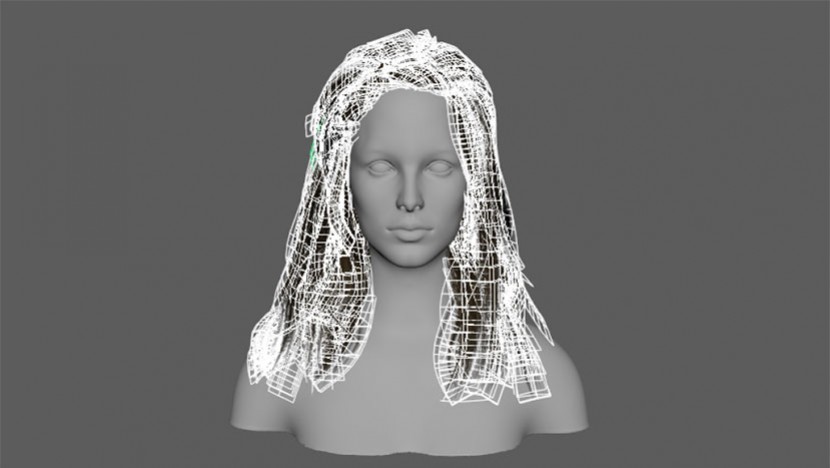RELATED TOPICS

For her graduation work Ellie Porfyridou chose real-time hair as her research topic.
Hair is a multiplex mixture of geometry, shading and texturing process. In addition, it requires many iterations to achieve a desirable result. The usual pipeline used in gaming studios consists of two major parts. First part is the creation of the textures. Namely various strands of hair fibres used to display the locks. Second chunk of the workflow is the card creation. Polygonal stripes used to place on the scalp of the 3d model to form the shape of the hair. The necessary hairstyle is then created from the polygonal mesh.
To generate the hair texture various software can be used. Each method has different outcomes as well as own nuances and variances. For the configuration of the hairstyle any 3D modelling software one is familiar with would be appropriate. Autodesk’s Maya and XGen was the medium of choice for polygonal creation of the hair cards.
A QUICK OVERVIEW OF THE PROCESS
Hair cards with assigned hair texture.
Gradual hairstyle build-up. Base layer, middle layer, finishing touch up layer.
Original hair mesh, smoothed mesh preview, converted into actual geometry.
Hair mesh with applied diffuse texture. From top left 65k, 30k, 13k, 6k, 4k and 2.5k respectively.
Hair example with additional maps, screenshot taken in Unreal engine 4.19
COMPLEX FEMALE HAIR
First pass of hair mesh imported from Zbrush.
Braid element base mesh versus the final mesh.
Exported hair mesh with 19k faces.
Final Result in Unreal
Even though a relatively high polycount hair mesh has been presented here as final image, it has been shown that reducing the number of polygons to a certain amount doesn’t affect significantly the visual quality of the hair. Furthermore, in modern games due to increase in processing power, developers dedicate a generous polybudget to main characters hair that can reach 100k triangles in game,
FEATURED ON 80 LEVEL
This graduation work has already been featured on 80 Level!
Congratulations Ellie !










